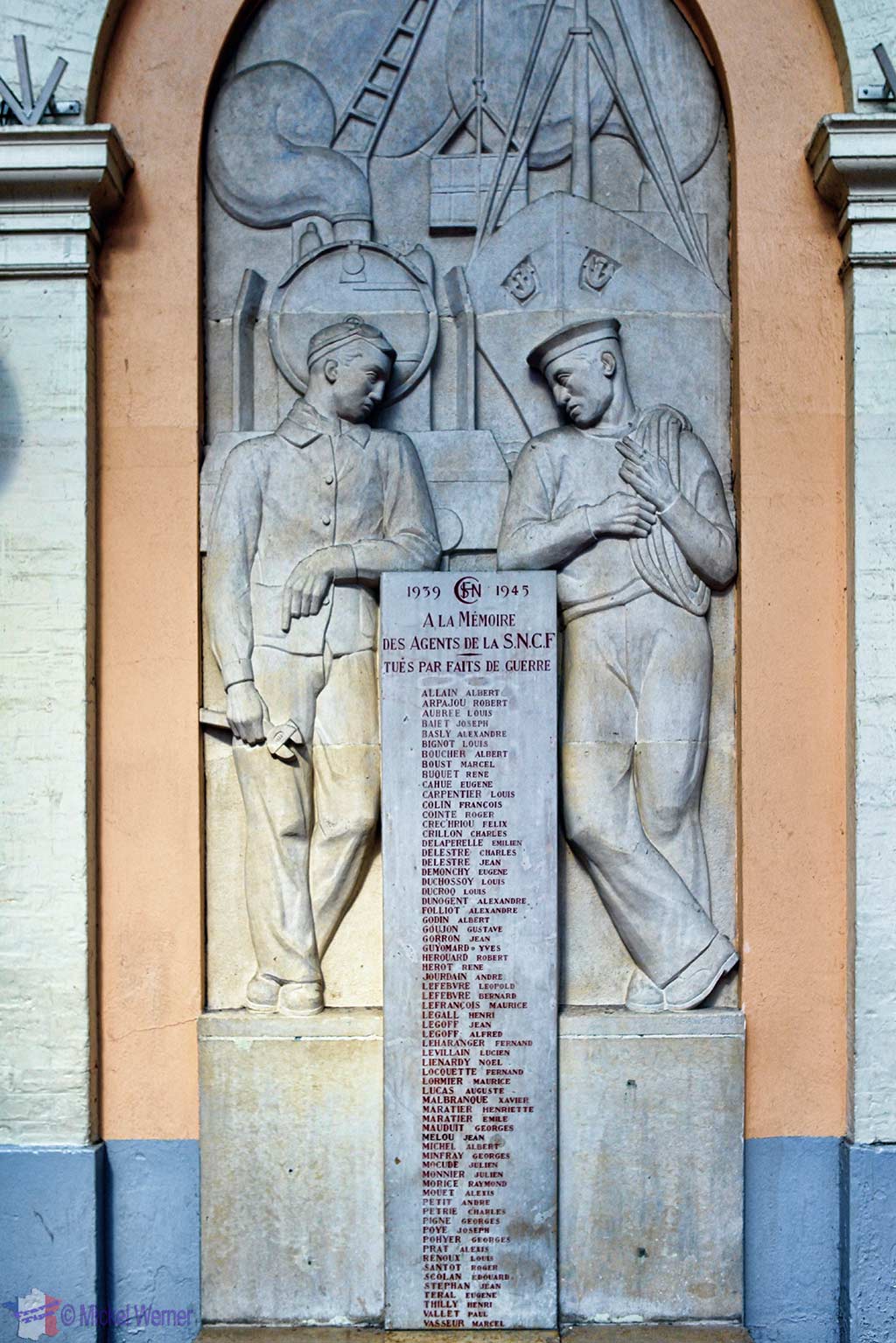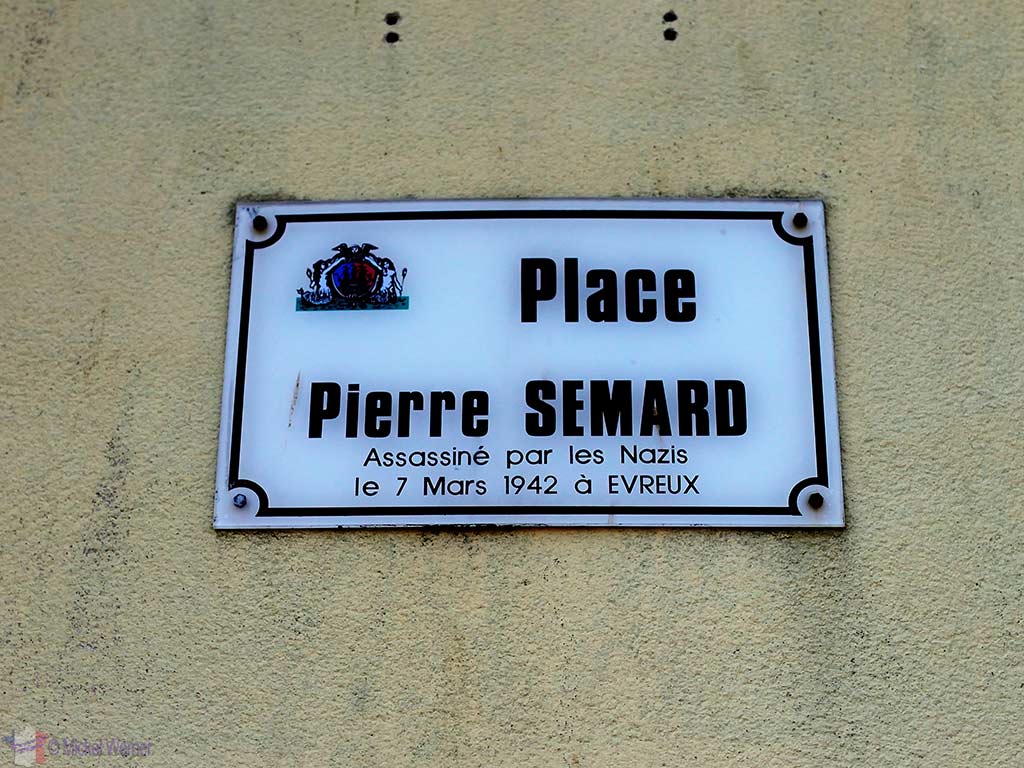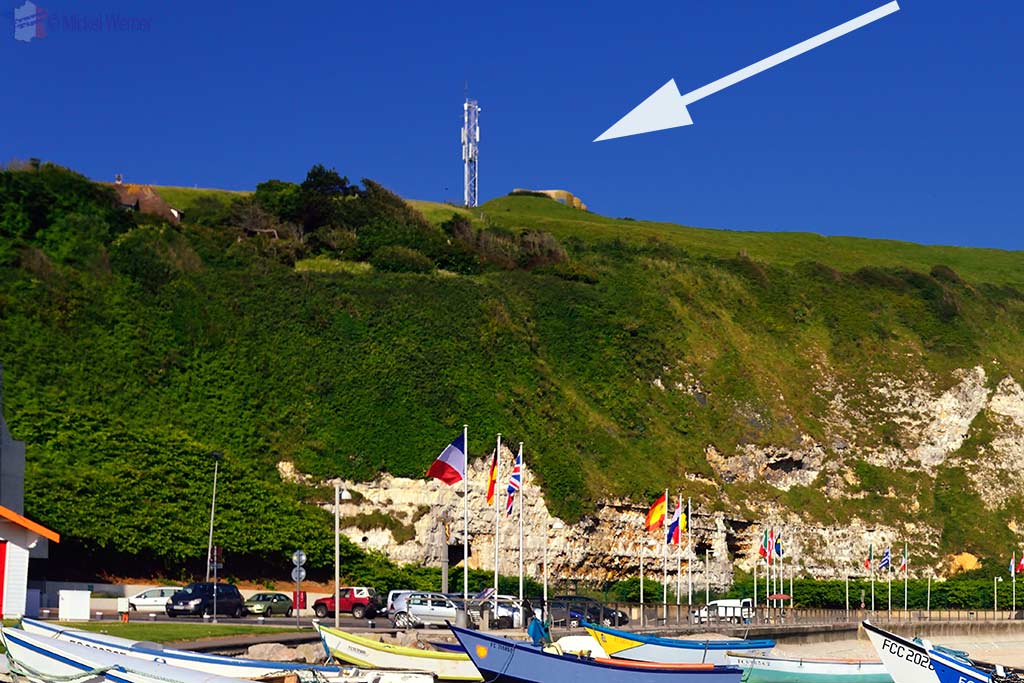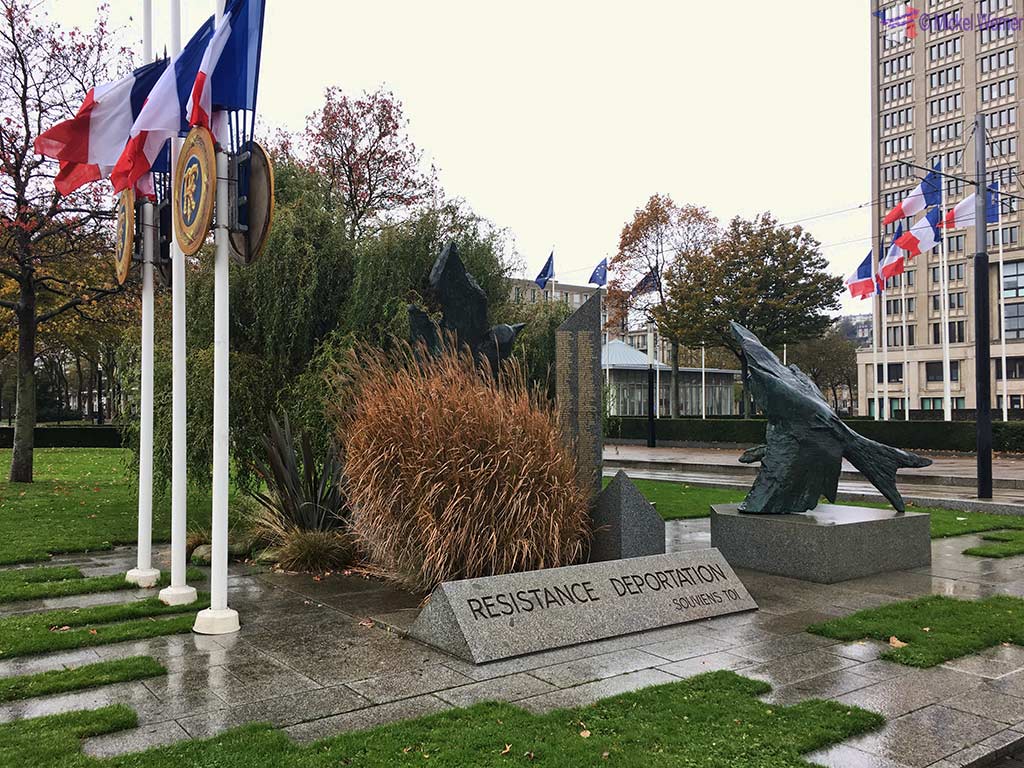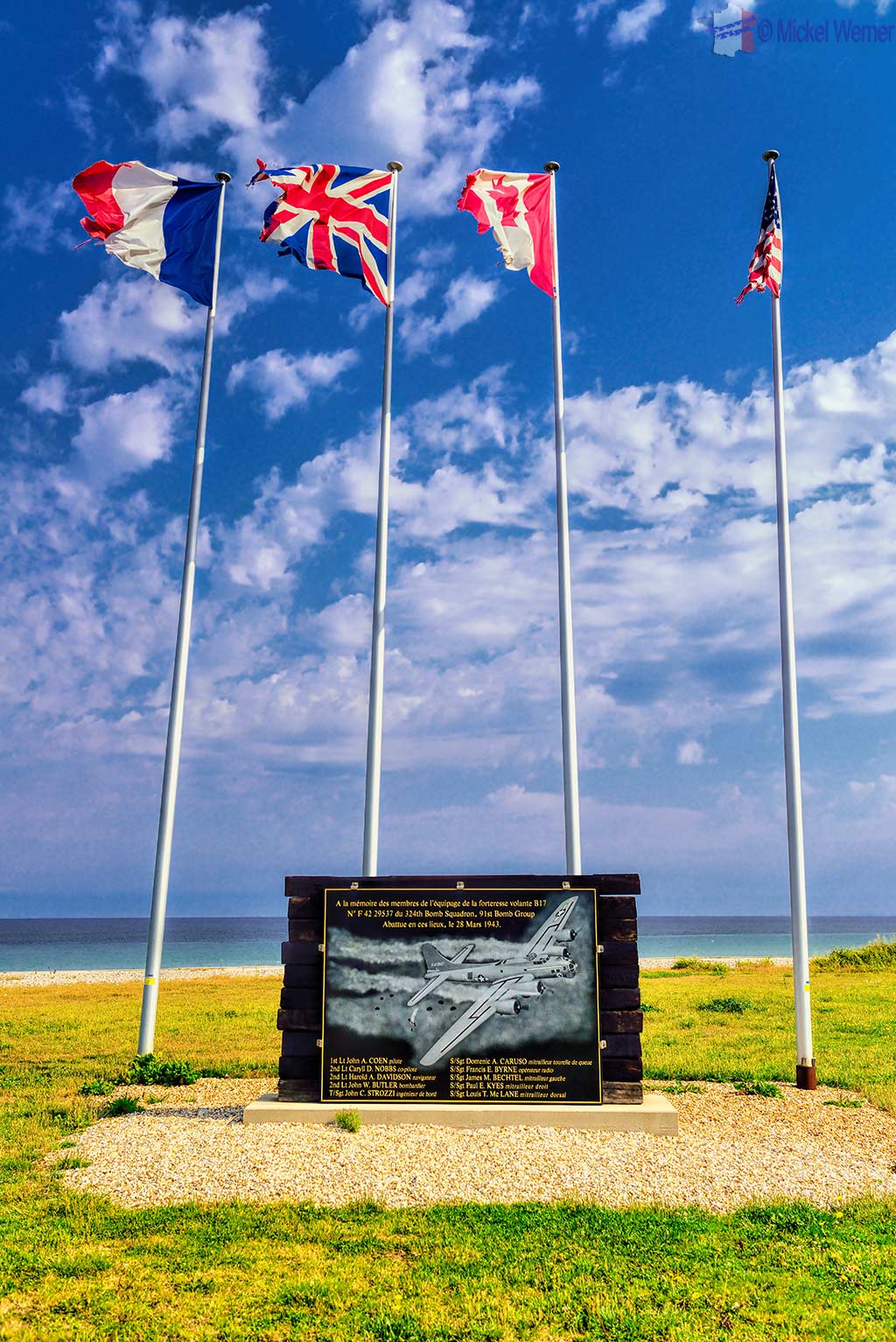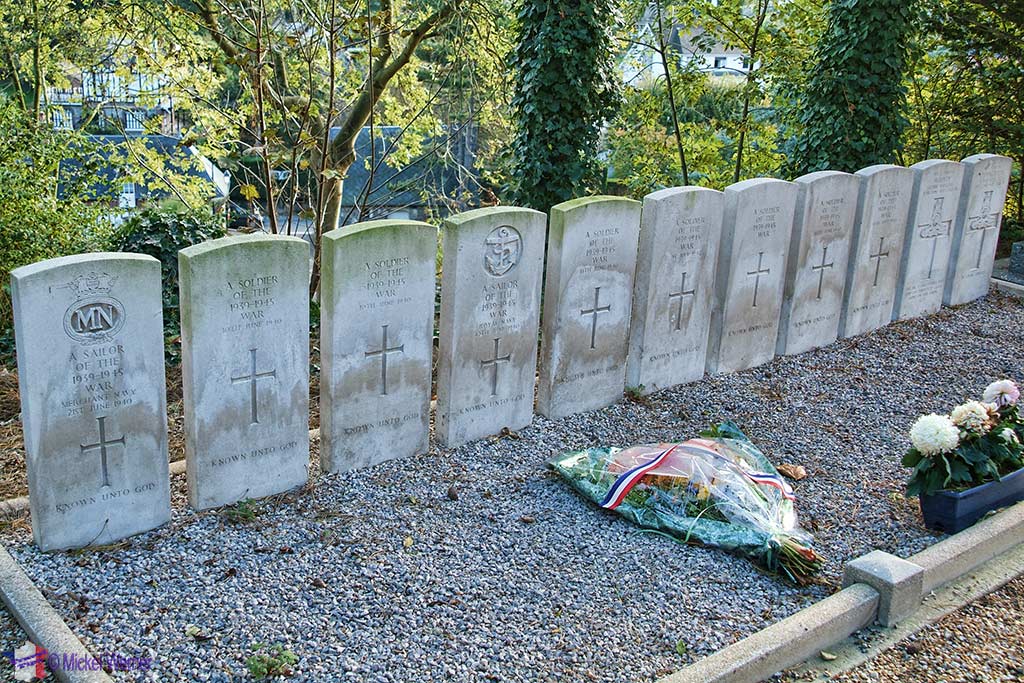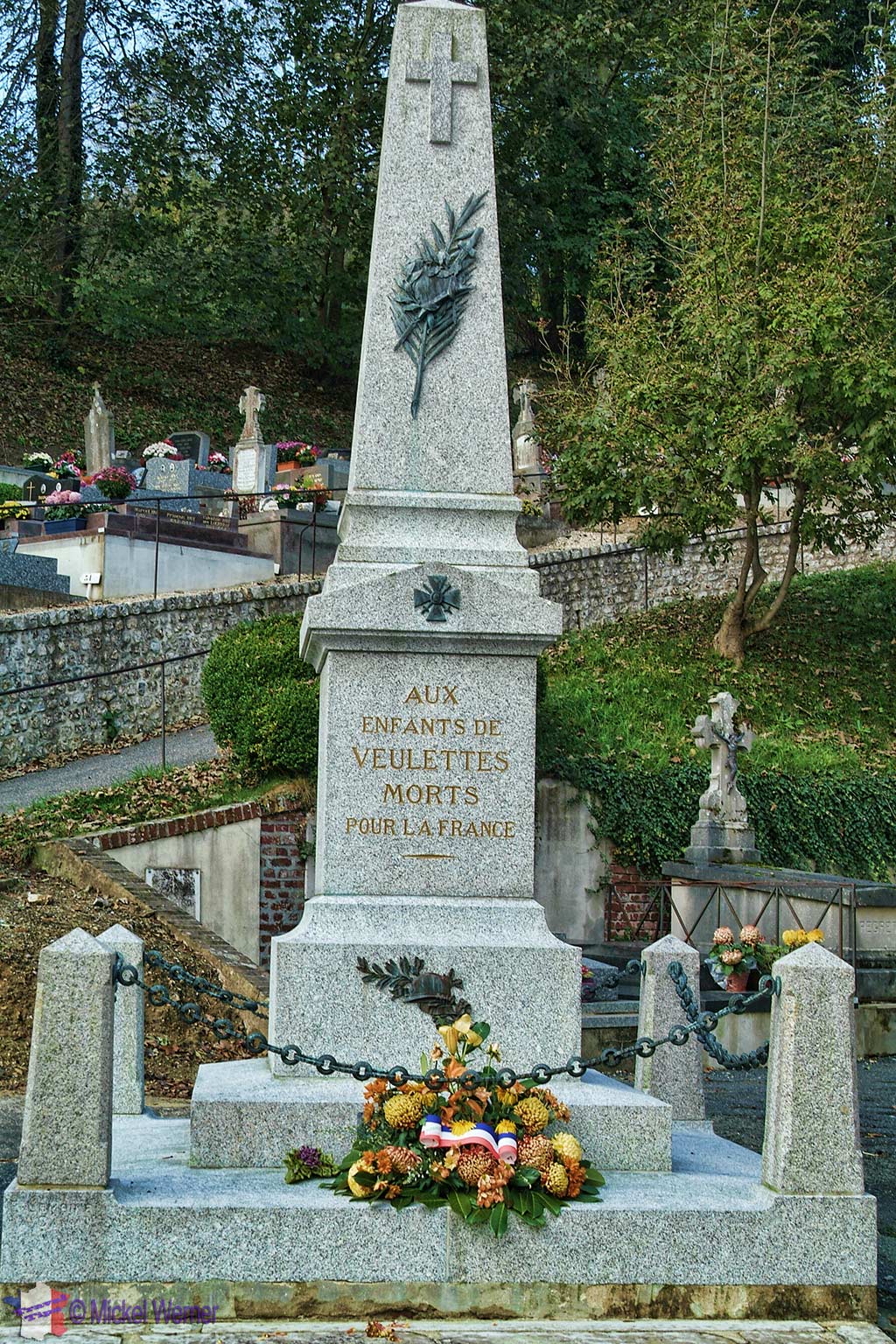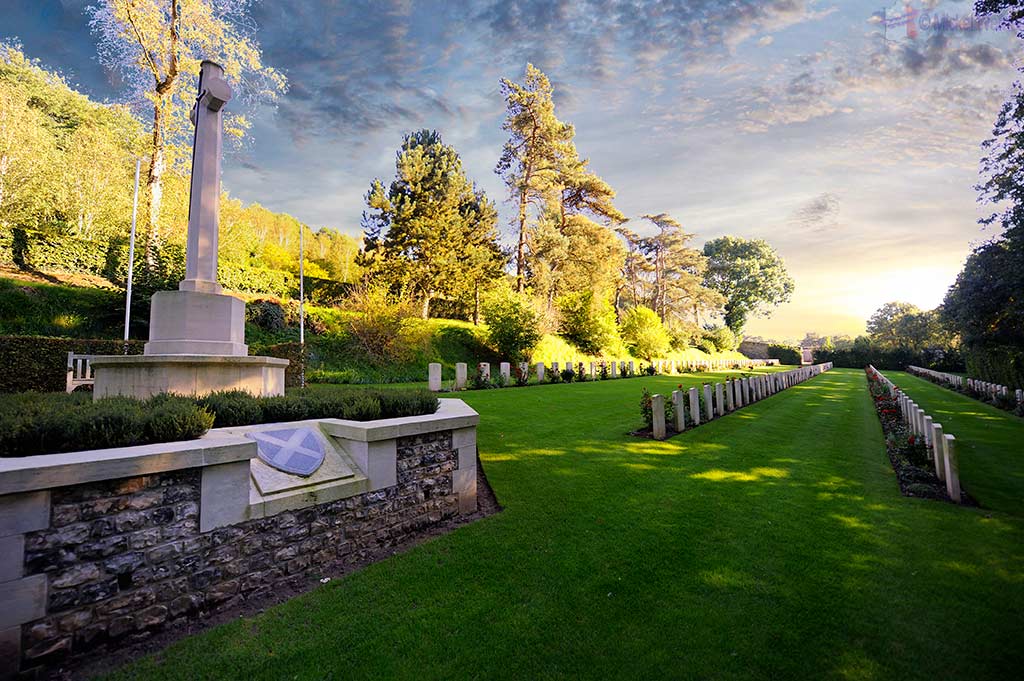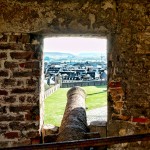Although the Lower part of Normandy saw the biggest brunt of the WWII battles, with D-Day and the immediate battles that followed, the Upper part of Normandy saw its fair share of fighting. And during WWI, it was one of the battlefronts.
Therefore throughout Normandy, at almost any hamlet, village, town and city, you will find memorials to both World Wars. Apart from these memorials you will also often find remains of the wars left behind in some field. German bunkers (part of the Atlantic Wall) can be found all along the Upper Normandy coast line with a very large selection around the city of Dieppe (click here to read more about The Dieppe Raid).
Most graveyards will have a memorial of some sort, as do most of the railway stations. The Allied countries that liberated Normandy are still honoured. Often, and I have seen this to be true, Canadians who enter a bar will be given free drinks. Even still today…
You will see when visiting these memorial and graveyard sites, there are usually fresh flowers and the areas are very clean and well kept. Of course, the German bunkers are here to stay for another century or so.
Below is but a small overview of what you can find in Upper Normandy with regards to World War I and World War II.
Fecamp
Fecamp was a strategic area for the Germans since it had a deep harbour surrounded by high cliffs, so easy to defend. On top of the cliffs, called Cap Fagnet, you can find a very large maze of bunkers:

On these cliffs you will find several concrete bunkers housing not only canons, machine gun nests but also an 80 person hospital!! There is a maze of tunnels interconnecting the different areas. They are so complex you need a guide to visit them.
Therefore you can visit the bunkers, but only after a reservation. To reserve call or email: (+33-) 02 35 10 60 96 – patrimoine@ville-fecamp.fr. A guide will take you through the bunker complex.
On the central square of Fecamp you will find a large monument dedicated to all soldiers who died in both World Wards, the Indochina war and the North Africa uprising (Algeria).
Dieppe
Dieppe was already badly hit around the middle of WWII during the failed The Dieppe Raid, and you will find plenty of monuments honouring the fallen Canadians of the raid, but it’s not just the Dieppe Raid that you will see honoured:
This monument can be found at the SNCF railway station, showing all the names of railway employees who died during WWII.
Around France, if you look at small signs on buildings, even road name signs, you can often see things like this:
This is a square named after Pierre Semard, the leader of the French communist party, assassinated by the Germans. Often roads and even buildings are named after prominent, or even unknown, citizens who have been killed by the nazis.
Veules-les-Roses
Veules-les-Roses, a small but beautiful coastal village, was heavily involved during the opening days of World War II.

High on the cliffs overlooking Veules you will find this WWII memorial including cannons of a ship (the “Cerons”) that was sunk there while trying to evacuate 1000’s of soldiers trapped by the fast advancing German tanks led by field marshal Rommel. It was the biggest single-day loss of lives during WWII in Europe.
The sunken ship itself is only visible under extreme low tide.
Yport
Like with most coastal towns in Upper Normandy, the Atlantic Wall built by the Germans is still omnipresent, though at times you need to carefully look for them.
Here, at Yport, a small coastal resort town, high up the cliffs you will see another series of bunkers.
Caudebec-en-Caux
Caudebec-en-Caux was a town that was almost totally destroyed during the opening days of WWII when thousands of cars amassed in the town’s streets waiting to cross the Seine river, fleeing before the arriving Germans. A single airplane bomb on one of the waiting cars started a massive fire that lasted for 3 days, fuelled by the petrol in the waiting but immobilized cars..

The church towards the end of the war was badly shot up by advancing Allied troops.
Etretat
Etretat was involved in both WWI and WWII. The central market was used as a British and then an American hospital during WWI, and during WWII it became part of the Pall Mall camp, a R&R area for American troops. At the entrance of the market building stands this plaque:

Below is a Google Streetview 360° view of the outside of this market that was turned into a hospital (click on the photo and keep clicked while turning left/right/up/down, or press the “+” or “-” to zoom in/out).
Fontaine-la-Mallet
The tank in the photo at the top of this posting can be found in Fontaine-la-Mallet, a small suburban village outside of Le Havre.
The tank, and many others, where used during the last few days of the Battle of Normandy, when 45,000 Allied soldiers pushed out the Germans from Le Havre and its surroundings.
The offensive was called Operation Astonia, and you can see one of the tanks leftover lying in a field.
Le Havre
Le Havre is a city that was heavily bombed during the last part of World War II. It’s France’s 2nd largest harbour, so often the target for the Allied forces.
In front of the harbour entrance, during extreme low tides, you can see the last remains of some boats that were sunk here and never removed.
In the city centre, you will find this immense memorial:
This is the wars memorial, located just outside the water basin and the theatre building (the “Volcan”).
In front of the City Hall you will find this memorial for the people who were deported during WWII, with their names inscribe on a large stone (in the back of the photo). The French words written say “Deportation Resistance .. Remember“.
Veulettes-sur-Mer
Another small seaside resort town, Veulettes-sur-Mer, has on one side of their long beach this following monument:
Backed by the flags of the USA, UK and Canada (and the French one), the monument has an airplane visible on it. On a closer look….:
.. it is one B17 Bomber airplane that crashed here on the 28th of March 1943. The names of the crew are displayed here, with their ranks and position.
Further up the hill you will find at the village church this….:
It’s a sign signalling that there is a part of the cemetery reserved for the Commonwealth War Graves..
… nameless graves….(notice the flowers)
And a war memorial to the citizens of Veulettes who have died during the World Wars.
Saint-Valery-en-Caux
The large seaside town, Saint-Valery-en-Caux, has a rather large War Cemetery. Saint-Valery was part of the massive evacuation from the advancing tank division of field marshal Rommel, and it is between Saint-Valery-en-Caux and Veules-les-Roses that saw 1000’s of fleeing soldiers die, caught in the crossfire of the tanks.
The 51st (Highland) Infantry Division, a Scottish Army division that already saw action during WWI, was part of the group of soldiers that had to surrender after a massive attack by the Germans tanks. Many of them died, and this is where they are buried.
Sassetot-le-Mauconduit
Sassetot-le-Mauconduit is a small village, home to the castle that housed the Empress Sissi of Austria, that like most villages, honour the people who have made the ultimate sacrifice during the wars.
Outside the main village church you will find this fine monument dedicated to the citizens of the village that died during the wars.
Theuville-aux-Maillots
An example of all towns having monuments to the fallen, can be found at Theuville-aux-Maillots:
You can see that the original monument was dedicated to the citizens fallen during WWI, and at the bottom they added WWI victims.
Summary
As you can see from this small selection in Upper Normandy, that anywhere you go you will find remnants and memorials of both World War I and World War II. They are not in the scale of Lower Normandy where the D-Day beaches are, but they are still sobering.
Related Posts
- 10000
 The Utah Beach was one of the D-Day landing beaches, this one mostly staffed with US Army soldiers. It was on the Western edge of the D-Day beaches, and the beach consisted of deep sand and dunes. 3200 soldiers died on the beach that day. To commemorate this occasion, a museum…
The Utah Beach was one of the D-Day landing beaches, this one mostly staffed with US Army soldiers. It was on the Western edge of the D-Day beaches, and the beach consisted of deep sand and dunes. 3200 soldiers died on the beach that day. To commemorate this occasion, a museum… - 10000
- 10000
- 10000
 Normally speaking the village of Sainte-Mere-Eglise should mean nothing to most people. Unless you are a WWII buff or a movie buff. The movie in question is "The Longest Day" starring none other than John Wayne trying to get to Sainte-Mere-Eglise during D-Day. The village itself nowadays consists of some…
Normally speaking the village of Sainte-Mere-Eglise should mean nothing to most people. Unless you are a WWII buff or a movie buff. The movie in question is "The Longest Day" starring none other than John Wayne trying to get to Sainte-Mere-Eglise during D-Day. The village itself nowadays consists of some… - 10000


